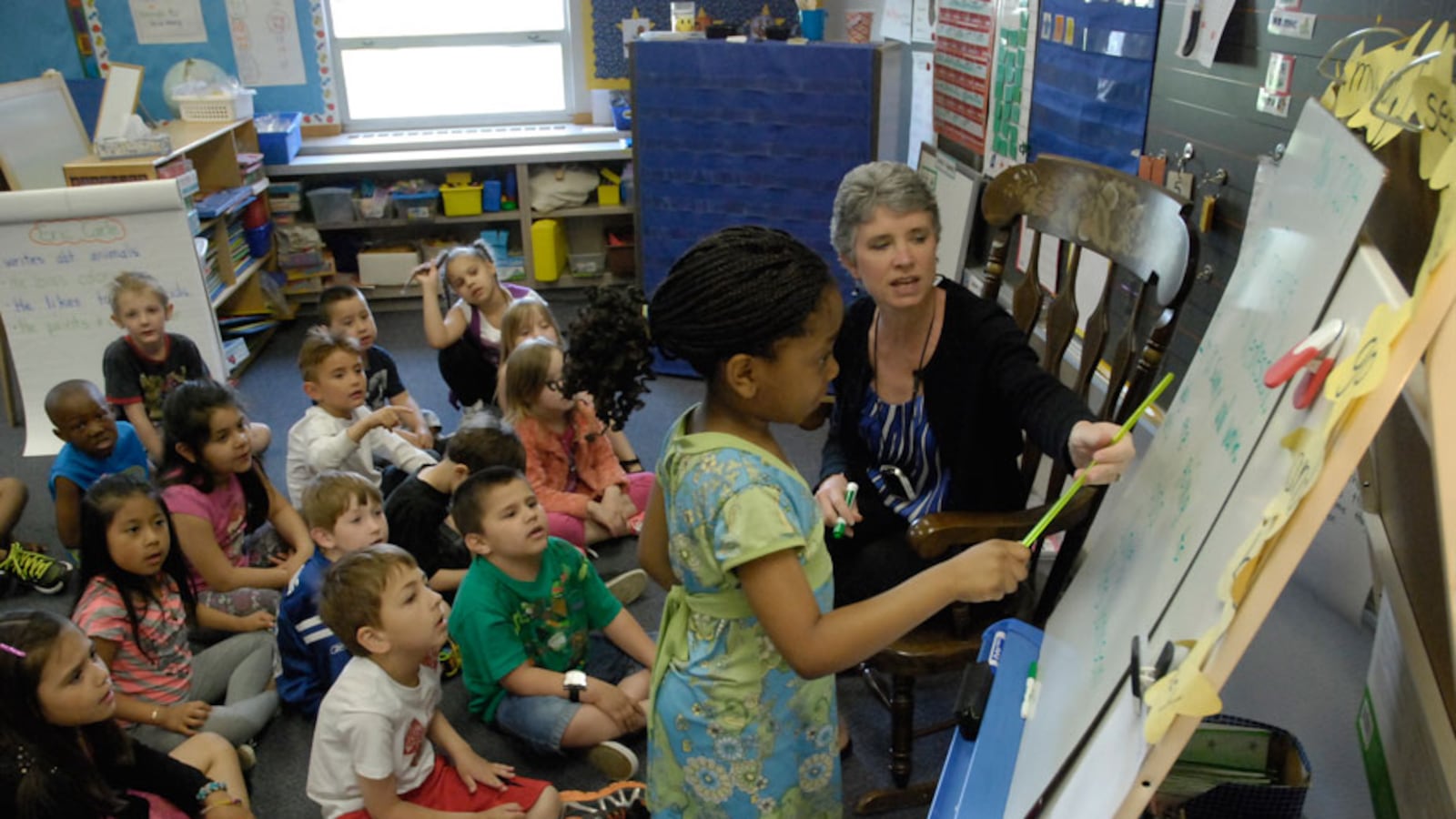About one in four Marion County teachers left their schools between 2013 and 2014, with an even higher number leaving from Indianapolis Public Schools.
However it’s not clear exactly why they leave, beyond general trends that suggest keeping teachers is hardest in districts that are more urban and have more poor students.
A 49-person panel created by state Superintendent Glenda Ritz to study the issue of recruiting and retaining teachers met Friday to dig into teacher turnover in the past few years. The group is expected to meet throughout the next few months to develop legislative proposals to keep more teachers coming back to teach the next year.
Ritz said she wanted action steps when the group is finished.
“This is not a study committee,” Ritz said. “Its purpose is to provide action.”
The panel is mostly educators, but also include two legislators: Rep. Greg Porter, D-Indianapolis, and Rep. Randy Truitt, R-West Lafayette. Caitlin Beatson, with Indiana Department of Education, said the problem might be worse in inner cities and poor communities, but it also affects affluent areas some teachers prefer.
“We do have this retention problem even in what we consider to be our low-need schools,” Beatson said.
According to education department data, Indiana school districts brought back about 80 percent, or four out of five, of their teachers the next year in the same schools between 2012-13 and 2013-14. For Marion County, 73.6 percent of teachers returned to the same school in the second year, but IPS was far lower at 61.3 percent.
Beatson said a plan submitted by the state to the U.S. Department of Education found that, on average, 85 percent of teachers were retained from year to year in wealthier districts — a figure that would be considered high retention for high-poverty districts.
However, “retention” doesn’t just refer to teachers who either stay in teaching or leave the profession altogether — if a teacher switches districts or retires, that person counts against a district’s retention rate. Indiana’s 80.8 percent retention isn’t necessarily the best way to estimate the entire state’s teaching force, then, as it probably underestimates the number of teachers who are still teaching by not counting those who’ve simply switched schools or finished their careers.
Data from a study done by the National Center for Education Statistics showed that of public school teachers working in 2007-08, 84.5 percent stayed at the same school the next year nationwide, 7.6 percent moved to another school and 8 percent left the profession entirely.
Dan Goldhaber, with the University of Washington’s Center for Education Data and Research cautioned on Twitter that 100 percent retention isn’t necessarily best for schools. Students are better off if ineffective teachers leave, he said. Plus, he said, it matters where the teachers go specifically, too.
“What’s typical depends on whether you are talking about attrition from (schools), (districts), or the profession,” Goldhaber said in a tweet reacting to comments to the panel. “Each has different effects.”
Some of Indiana’s wealthiest communities, such as Zionsville and Carmel, only had retention rates from 2012-13 to 2013-14 at 84.7 percent and 83.7 percent of teachers staying, respectively. In Zionsville, 5 percent of students qualify for free or reduced-price lunch, and in Carmel, 10 percent qualify. They have the least poor children of all Indiana districts.
Department officials specified three main reasons why teachers might not stay at the same school from one year to the next: training, working conditions and pay and the public’s perception of teachers.
From 2012 to 2015, the state reported that teacher pay increased by between 8 and 9 percent for teachers with up to seven years of experience, but after that, pay generally fell for more experienced teachers, eventually plateauing for those with about 20 years in the classroom. The average salary for a first-year teacher was $37,044 in 2015, up from $33,530 in 2012. Inflation between 2012 and 2015 was just more than 4 percent nationally.
The potential causes for the turnover were not directly connected to the state data presented, department officials said, and came as the result of information collected by the department through four meetings with and a survey of a selection of teachers, administrators, parents and community members.
The group will continue to meet to put together proposals for legislators in November or December, Ritz said. During the last legislative session, bills promoting more training and mentoring for teachers and pay incentives to encourage teachers to complete them failed to gain traction early on and never made it to a vote.
Ritz said she believes teachers should be evaluated and held accountable for their performance, but changes needed to be made to make sure teachers were staying in schools, and not just schools that had students with fewer barriers to learning, such as coming from low-income families or requiring English-language or special education services.
“How do we ensure that we have quality educators even in our schools that have trouble retaining and recruiting teachers,” Ritz said. “Once you hire a teacher and once you know that they are good, you want to keep them.”

